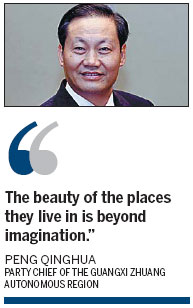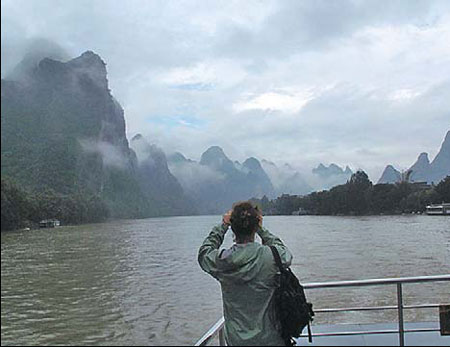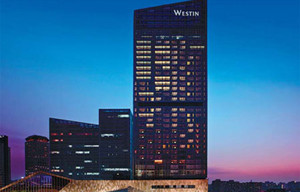Tourism to become key for Guangxi
|
The section of Lijiang River from Guilin to Yangshuo in the Guangxi Zhuang autonomous region, dubbed "Ten Miles of Gallery", shows its special charm on a cloudy day. Li Yang / China Daily |

Officials aim to boost standard of living for millions under the national poverty line
Officials in Guangxi, an underdeveloped region in South China, vow to turn tourism into an engine of growth in 10 years, despite difficulties.
Peng Qinghua, Party chief of the Guangxi Zhuang autonomous region, presided over the largest conference on tourism in the region's history from Wednesday to Thursday in Guilin, the region's top tourist destination.
There are 49 poor counties in Guangxi with about 7.9 million people living under the national poverty line, Peng said.
"But the beauty of the places they live in is beyond imagination," he said.
"Therefore developing tourism, a shortcut to improving their living standard and integrating them into the modern world, bears different meanings to Guangxi."
The average GDP per capita in Guangxi was $4,446 last year. International experience indicates that when the figure surpasses $5,000, the tourism industry will enter a robust growth stage, he said.
"It means Guangxi is just at the threshold of the stage and this prospect raises high and urgent requirements for the government to make use of Guangxi's natural, cultural and environmental resources."
The conference was attended by Shao Qiwei, chief of the National Tourism Administration and 500 executives of tourism agencies, tourism experts, and officials in Guangxi.
Guangxi, which covers about 230,000 square kilometers and has 50 million people of 14 ethnic groups, borders Vietnam to the south and meets the South China Sea with 1,596 kilometers of coastline. It is famous for its Karst landform with hundreds of rivers meandering through the endless mountains.
Guangxi has been a cultural, economic and military center in Southwest China since the Song Dynasty (AD 960-1279) and boasts a number of places of historical interest, which are often eclipsed by picturesque landscape.
According to Cheng Jianjun, chief of the Guangxi tourism administration, Guangxi ranks eighth in the country in terms of the number of national-level tourist spots in China. But Guangxi ranks 18th in tourist numbers and its tourism revenue is only 20th among all provincial regions.
Peng Qinghua said Guangxi is offering third-class service with first-class tourism resources, which is developed by second-class planners and managers.
The State Council in March approved Guilin to speed up its tourism development and set a good example for other tourism cities in China as an international tourist spot. Guilin attracts 30 million visitors each year and many tourists and travel agencies often complain about the difficulty of booking a room in the city.
Wang Shulian, former manager of the guest house department of Ronghu Hotel, the largest and oldest hotel in Guilin, said: "In the early 1980s, Ronghu was the only hotel in Guilin. Our guests even slept in the corridor and lobby. It is better now. But our rooms are full around the clock throughout the year."
However, some foreigners find the city is far from international.
"Food, toilets and language are the three biggest problems for my customers from South America," said Demse Wojdeki, a tour guide in her 40s from Argentina.
"They simply cannot get used to local food. It's hard to find a good toilet with tissues. And there are no Spanish language posters in the whole city."
Peng said the government will take its responsibility in developing Guangxi's tourism and protect the environment and cultural diversity.
"We are desperately thirsty for people in tourism development, management and marketing from home and abroad to build up their careers in Guangxi," Peng said.
Karim Fajr from Morocco, general manager of Club Med in Guilin, the first international tourist resort managed by a French enterprise in Guangxi, said: "I have 72 foreign employees from different countries here. Working with foreign companies is the easiest and fastest way for Guilin to be international." The governments here are very cooperative, he added.
Tourism's share of Guangxi's GDP rose from 7.4 percent in 2008 to 12.7 percent in 2012 and tourism contributed about 6 percent of Guangxi's economic growth last year, despite the global financial crisis.
The Guangxi government revealed its tourism development plan and pledged to increase Guangxi's tourism revenue from the current 100 billion yuan ($16 billion) to 300 billion in 2015 and tourists expected to triple to 300 million in 2015, among which 4.5 million are from abroad.
Tourism is expected to contribute 30 percent of Guangxi's GDP by 2020 as a strategically important industry in Guangxi's economic structure and a comprehensive modern service sector.



















